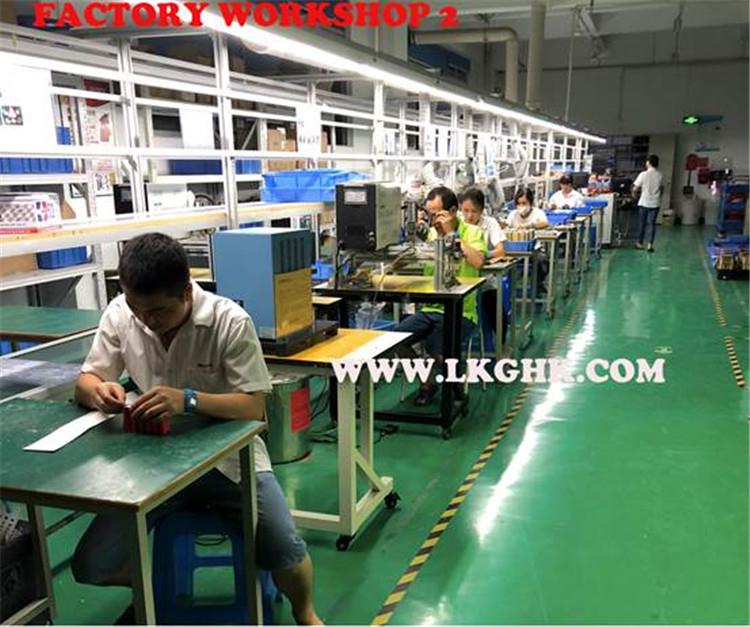- 28
- Dec
加速全固態鋰電池量產
Sulfur-based all-solid-state batteries are expected to replace current lithium-ion batteries because of their superior safety performance. However, in the preparation process of all-solid-state battery slurry, there are incompatible polarities among solvent, binder and sulphide electrolyte, so there is no way to achieve large-scale production at present. At present, the research on all-solid-state battery is mainly carried out on the laboratory scale, and the volume of the battery is relatively small. The large-scale production of all-solid-state battery is still towards the existing production process, that is, the active substance is prepared into slurry and then coated and dried, which can have lower cost and higher efficiency.
為前線醫護人員打氣,送上由衷的敬意。讓你在送禮的同時,也為香港盡一分力。
Difficulties faced
因此,很難找到合適的聚合物粘合劑和溶劑來支持液體溶液。 大多數硫基固體電解質都可以溶解在極性溶劑中,例如我們目前使用的NMP。 所以溶劑的選擇只能偏向於非極性或極性較弱的溶劑,這意味著粘合劑的選擇也相應地狹窄——聚合物的大部分極性官能團都無法使用!
這還不是最糟糕的問題。 在極性方面,與溶劑和硫化物電解液相容的粘合劑會導致聚集體與活性物質和電解液之間的結合減少,這無疑會導致極端的電極阻抗和快速的容量衰減,對電池性能極為不利。
為了滿足上述要求,可以選擇三種主要物質(粘合劑、溶劑、電解質),只能選擇非極性或弱極性溶劑,如對(P)二甲苯、甲苯、正己烷、苯甲醚等.,使用弱極性聚合物粘合劑,如丁二烯橡膠(BR)、丁苯橡膠(SBR)、SEBS、聚氯乙烯(PVC)、丁腈橡膠(NBR)、矽橡膠和乙基纖維素,以滿足所需的性能.
二
原位極性-非極性轉換方案
In this paper, a new type of binder is introduced, which can change the polarity of electrode during machining by means of protection-de-protection chemistry. The polar functional groups of this binder are protected by non-polar tert-butyl functional groups, ensuring that the binder can be matched with the sulfide electrolyte (in this case LPSCl) during the preparation of the electrode paste. Then through the heat treatment, namely the drying process of the electrode, the tert-butyl functional group of the polymer binder can be thermal split, to achieve the purpose of protection, and finally get the polar binder. See Figure A.
圖片
BR (butadiene rubber) was selected as polymer binder for sulfide all-solid-state battery by comparing the mechanical and electrochemical properties of the electrode. In addition to enhancing the mechanical and electrochemical properties of all-solid-state batteries, this research opens up a new approach to polymer binder design, which is a protection-de-protection-chemical approach to keep electrodes in the appropriate and desired state at different stages of electrode manufacturing.
然後,選擇了聚丙烯酸叔丁酯 (TBA) 及其嵌段共聚物聚丙烯酸叔丁酯-b-聚 1, 4-丁二烯 (TBA-B-BR),其羧酸官能團被熱解的叔丁基保護。本實驗。 事實上,TBA是PAA的前身,PAA在目前的鋰離子電池中普遍使用,但由於極性不匹配,不能用於硫化物基全固態鋰電池。 PAA的強極性能與硫化物電解質發生劇烈反應,但由於叔丁基的保護性羧酸官能團,PAA的極性可以降低,使其溶於非極性或弱極性溶劑。 熱處理後,叔丁酯基團分解釋放異丁烯,形成羧酸,如圖B所示。兩種聚合物脫保護的產物分別用(脫保護)TBA和(脫保護)TBA- B-BR。
圖片
Finally, the paA-like binder can bond well with NCM, while the whole process takes place in situ. It is understood that this is the first time an in situ polarity conversion scheme has been used in an all-solid-state lithium battery.
至於熱處理溫度,在120℃下沒有觀察到明顯的質量損失,而在15℃下160h後相應的丁基質量損失。 這說明有一定的溫度可以脫除丁基(在實際生產中,這個溫度時間過長,是否有更合適的溫度或條件來提高生產效率需要進一步研究討論)。 脫保護前後材料的 FT-IR 結果也表明固體電解質不干擾脫保護過程。 用脫保護前後的膠粘劑製作膠膜,結果表明脫保護後的膠粘劑與集流體具有更強的粘合力。 為了測試脫保護前後粘合劑與電解質的相容性,進行了XRD和拉曼分析,結果表明LPSCl固體電解質與被測粘合劑具有良好的相容性。
Next, make an all-solid-state battery and see how it performs. Using NCM711 74.5%/ LPSCL21.5% /SP2%/ binder 2%, the stripping strength of pole sheet shows that the stripping strength is the largest when binder tBA-B-BR is used (as shown in Figure 1). Meanwhile, the stripping time also has an impact on the stripping strength. The deprotected TBA electrode sheet is brittle and easy to fracture, so TBA-B-BR with good flexibility and high peel strength is selected as the main binder to test the battery performance.

Figure 1. Peel strength with different binders
The binder itself is ionic insulating. In order to study the effect of the addition of binder on ionic conductivity, two groups of experiments were conducted, one group containing 97.5% electrolyte +2.5% binder and the other group containing no binder. It was found that the ionic conductivity without binder was 4.8×10-3 SCM-1, and the conductivity with binder was also 10-3 order of magnitude. The electrochemical stability of TBA-B-BR was proved by CV test.
三
Half battery and full battery performance
許多對比試驗表明,脫保護的粘合劑具有更好的附著力,對鋰離子的遷移沒有影響。 用不同的粘合劑製成的半電池進行電化學性能測試,各種實驗半電池分別通過混合有粘合劑的正極、無粘合劑的固體電解質和Li-在單因素實驗的電極中,未混合粘合劑的固體電解質中,以證明對陽極粘合劑的不同影響。 其電化學性能結果如下圖所示:
圖片
在上圖中: A. 為正極面密度為8mg/cm2時不同粘合劑的半電池循環性能,B為正極面密度為16mg/cm2時不同粘合劑的半電池循環性能。 從以上結果可以看出,(脫保護的)TBA-B-BR的電池循環性能明顯優於其他粘結劑,循環圖與剝離強度圖對比,表明極柱的力學性能起到了一定的作用。性能循環性能中的重要作用。
圖片
The left figure shows the EIS of NCM711/ Li-IN half cell before the cycle, and the right figure shows the EIS of half cell without the cycle of 0.1c for 50 weeks. The EIS of half cell using (deprotected) TBA-B-BR and BR binder respectively. It can be concluded from the EIS diagram as follows:
1. 無論循環多少次,每個電池的電解質層 RSE 都在 10 ω cm2 左右,代表電解質 LPSCl 2 的固有體積電阻。循環過程中電荷轉移阻抗 (RCT) 增加,但 RCT 增加使用BR 粘合劑顯著高於使用 tBA-B-BR 粘合劑的。 可以看出,使用BR粘合劑的活性物質之間的結合不是很牢固,循環中存在鬆動現象。
圖片
用掃描電鏡觀察不同狀態的極片斷面,結果如上圖所示: a. 循環前的tba-b-br(脫保護); B. 流通前BR; C. 25 週後 TBA-B-BR(脫保護); D. BR 25 週後;
循環前所有電極可以觀察到活性粒子之間緊密接觸,只能看到小孔,但循環25週後,可以看到明顯變化,用在c(起飛)關聯物——b——BR大多數粒子的正活性或者沒有裂紋,使用BR粘結劑顆粒的電極活性,中間有很多裂紋,如D黃色區域所示,另外電解液和NCM顆粒分離更嚴重,這是電池壞的重要原因性能衰減。
圖片
最後,驗證了整個電池的性能。 正極NCM711/負極石墨第一次循環可達到153mAh/g,85.5次循環後保持45%。
四
A brief summary
In conclusion, in all-solid-state lithium batteries, solid contact between active substances, high mechanical properties and interface stability are the most important to obtain high electrochemical performance.
